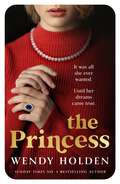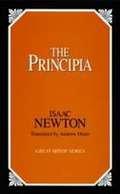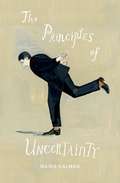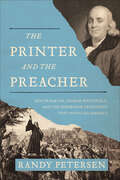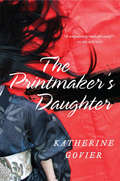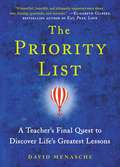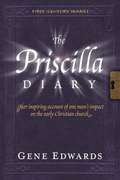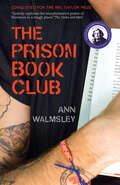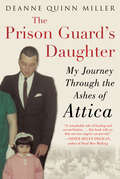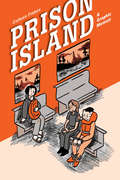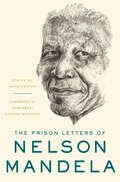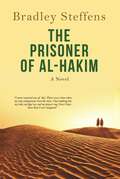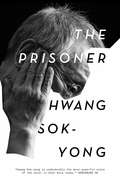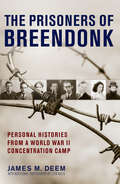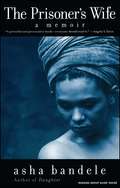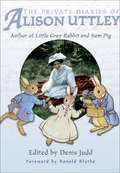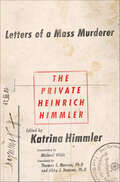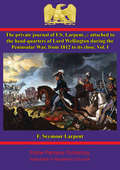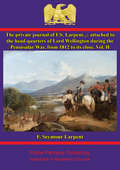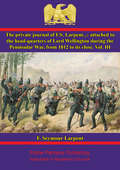- Table View
- List View
The Princess of Scotland
by Alison WeirThe Princess of Scotland is an e-short and companion piece to Katheryn Howard: The Tainted Queen, the compelling fifth novel in the Six Tudor Queens series by bestselling author and historian Alison Weir.'The King would not approve of my falling in love ... My marriage was in his gift' Brought up in the magnificent castles of Scotland under the storm of her parent's turbulent marriage, Margaret Douglas is well-acquainted with the changing whims of those who hold power. And when her father is exiled by King James V, Margaret is sent to England to seek refuge with her uncle, King Henry VIII. Margaret is an asset to Henry, who plans to use her eligible marriage status for his own advantage. But, surrounded by the excitement and indulgences of the English court, will Margaret be able to resist the temptations of a young admirer? As she well knows, keeping secrets from the King can be a dangerous game...
The Princess: The moving new novel about the young Diana
by Wendy Holden'Touching and distinctive . . . getting beneath the fairytale pomp and glamour' - Rachel Hore 'Fabulous behind-the-scenes royal drama . . . Riveting, revealing, an absolute must-read' - Imogen Edwards-Jones 'This delicate, sometimes wistful story will delight fans of historical fiction and British royalty' - Booklist 'A fresh perspective on a woman whom many people feel they already know' - Library Journal 'Diana is depicted as warm, empathetic and mischievous' - Mail on Sunday, Best New Fiction 'Fascinating' - Woman's Weekly 'Fictionalises Diana's life in riveting and tender detail' - Platinum 'Perfect for fans of The Crown' - Bella 'A compelling read' - Prima 'Scurrilous, funny, sharp, shot through with pathos' - Saga magazine, Pick of the Month 'A super-romantic royal wedding that was nothing like it seemed. Wendy delves beneath the glamour and public persona. Fascinating' - Woman magazine ___________The moving new novel about the young Diana.Diana believes in love. Growing up amid the fallout of her parents' bitter divorce, she takes refuge in romantic novels. She dreams of being rescued by a handsome prince.Prince Charles loves his freedom. He's in no rush to wed, but his family have other ideas. Charles must marry for the future of the Crown.The right girl needs to be found, and fast. She must be young, aristocratic and free of past liaisons.The teenage Diana Spencer is just about the only candidate. Her desperation to be loved dovetails with royal desperation for a bride.But the route to the altar is full of hidden obstacles and people with their own agendas.When she steps from the golden carriage on her wedding day, has Diana's romantic dream come true?Or is it already over?
The Principia
by Isaac Newton Andrew MotteSir Isaac Newton's Principia Mathematica (Mathematical Principles) (1687) is considered to be among the finest scientific works ever published. His grand unifying idea of gravitation, with effects extending throughout the solar system, explains by one principle such diverse phenomena as the tides, the precession of the equinoxes, and the irregularities of the moon's motion. Newton's brilliant and revolutionary contributions to science explained the workings of a large part of inanimate nature mathematically and suggested that the remainder might be understood in a similar fashion. By taking known facts, forming a theory that explained them in mathematical terms, deducing consequences from the theory, and comparing the results with observed and experimental facts, Newton united, for the first time, the explication of physical phenomena with the means of prediction. By beginning with the physical axioms of the laws of motion and gravitation, he converted physics from a mere science of explanation into a general mathematical system.
The Principles of Uncertainty
by Maira KalmanThe Principles of Uncertainty is an irresistible invitation to experience life through the psyche of Maira Kalman, one of this country's most beloved artists.
The Printer and the Preacher: Ben Franklin, George Whitefield, and the Surprising Friendship That Invented America
by Randy PetersenThe true story of a friendship between two very different men: Founding Father Ben Franklin and famed preacher of the Great Awakening George Whitefield.They were the most famous men in America. They came from separate countries, followed different philosophies, and led dissimilar lives. But they were fast friends. No two people did more to shape America in the mid-1700s.Benjamin Franklin was the American prototype: hard-working, inventive, practical, funny, with humble manners and lofty dreams. George Whitefield was the most popular preacher in an era of great piety, whose outdoor preaching across the colonies was heard by thousands, all of whom were told, “You must be born again.” People became excited about God. They began reading the Bible and supporting charities. When Whitefield died in 1770, on a preaching tour in New Hampshire, he had built a spiritual foundation for a new nation—just as his surviving friend, Ben Franklin, had built its social foundation. Together these two men helped establish a new nation founded on liberty. This is the story of their amazing friendship.
The Printmaker's Daughter: A Novel
by Katherine GovierA lost voice of old Japan reclaims her rightful place inhistory in this breathtaking work of imagination and scholarship from award-winning and internationally acclaimedauthor Katherine Govier. In the evocative taleof 19th century Tokyo, The Printmaker’sDaughter delivers an enthrallingtale of one of the world’s great unknown artists: Oei,the mysterious daughter of master printmaker Hokusai, painter of the Thirty-six Views of Mount Fuji. In a novel that willresonate with readers of Tracy Chevalier’s Girlwith a Pearl Earring, Lisa See’s SnowFlower and the Secret Fan, and David Mitchell’s The Thousand Autumns of Jacob de Zoet,the sights and sensations of an exotic, bygone era form the richly captivatingbackdrop for an intimate, finely wrought story of daughterhood and duty, artand authorship, the immortality of creation and the anonymity of history.
The Priority List
by David MenascheBased on a beloved teacher's most popular lesson, The Priority List is a bold, inspirational story of learning, love, and legacy that challenges us to ask: What truly matters in life? David Menasche lived for his work as a high school English teacher. His passion inspired his students, and between lessons on Shakespeare and sentence structure, he forged a unique bond with his kids, buoying them through personal struggles while sharing valuable life lessons. When a six-year battle with brain cancer ultimately stole David's vision, memory, mobility, and--most tragically of all--his ability to continue teaching, he was devastated by the thought that he would no longer have the chance to impact his students' lives each day. But teaching is something Menasche just couldn't quit. Undaunted by the difficult road ahead of him, he decided to end his treatments and make life his classroom. Cancer had robbed him of his past and would most certainly take his future; he wouldn't allow it to steal his present. He turned to Facebook with an audacious plan: a journey across America-- by bus, by train, by red-tipped cane--in hopes of seeing firsthand how his kids were faring in life. Had he made a difference? Within forty-eight hours of posting, former students in more than fifty cities replied with offers of support and shelter. Traveling more than eight thousand miles from Miami to New York, to America's heartland and San Francisco's Golden Gate, and visiting hundreds of his students, David's fearless journey explores the things we all want and need out of life--family, security, independence, love, adventure--and forces us to stop to consider our own Priority List.
The Priscilla Diary
by Gene EdwardsShipwrecks. Conflict. Imprisonment. This book continues the First-Century Diaries series. Here, in fictional diary form, is the story of Paul's journeys to establish the first-century church. Priscilla, a vibrant Roman follower of Jesus Christ and the wife of Aquila, narrates this dramatic account. Readers follow Paul as he faces the specter of Blastinius and legal heartaches in Jerusalem. A fascinating way to relive the struggles and the courage of the early church.
The Prism Of Race
by Nico SlateA scholar of race and a leader in the Afro-Asian solidarity movement, Cedric Dover embodied the 20th-century cosmopolitan redefinition of racial identity. Tracing Dover's evolution through his relationships with W. E. B. Du Bois, Langston Hughes, and Paul Robeson, this book tracks racial identity in the twentieth century.
The Prison Angel
by Kevin Sullivan Mary JordanThe winners of the 2003 Pulitzer Prize for international reporting tell the astonishing story of Mary Clarke. At the age of fifty, Clarke left her comfortable life in suburban Los Angeles to follow a spiritual calling to care for the prisoners in one of Mexico's most notorious jails. She actually moved into a cell to live among drug king pins and petty thieves. She has led many of them through profound spiritual transformations in which they turned away from their lives of crime, and has deeply touched the lives of all who have witnessed the depth of her compassion. Donning a nun's habit, she became Mother Antonia, renowned as "the prison angel," and has now organized a new community of sisters-the Servants of the Eleventh Hour—widows and divorced women seeking new meaning in their lives. "We had never heard a story like hers," Jordan and Sullivan write, "a story of such powerful goodness. " Born in Beverly Hills, Clarke was raised around the glamour of Hollywood and looked like a star herself, a beautiful blonde reminiscent of Grace Kelly. The choreographer Busby Berkeley spotted her at a restaurant and offered her a job, but Mary's dream was to be a happy wife and mother. She raised seven children, but her two unfulfilling marriages ended in divorce. Then in the late 1960s, in midlife, she began devoting herself to charity work, realizing she had an extraordinary talent for drumming up donations for the sick and poor. On one charity mission across the Mexican border to the drug-trafficking capitol of Tijuana, she visited La Mesa prison and experienced an intense feeling that she had found her true life's work. As she recalls, "I felt like I had come home. " Receiving the blessings of the Catholic Church for her mission, on March 19, 1977, at the age of fifty, she moved into a cell in La Mesa, sleeping on a bunk with female prisoners above and below her. Nearly twenty-eight years later she is still living in that cell, and the remarkable power of her spiritual counseling to the prisoners has become legendary. The story of both one woman's profound journey of discovery and growth and of the deep spiritual awakenings she has called forth in so many lost souls, The Prison Angel is an astonishing testament to the powers of personal transformation. .
The Prison Book Club
by Ann WalmsleyA daring journalist goes behind bars to explore the redemptive power of books with bikers, bank robbers, and gunmen An attack in London left Ann Walmsley unable to walk alone down the street, and shook her belief in the fundamental goodness of people. A few years later, when a friend asked her to participate in a bold new venture in a men's medium security prison, Ann had to weigh her curiosity and desire to be of service against her anxiety and fear. But she signed on, and for eighteen months went to a remote building at Collins Bay, meeting a group of heavily tattooed book club members without the presence of guards or security cameras. There was no wine and cheese, no plush furnishings. But a book club on the inside proved to be a place to share ideas and regain a sense of humanity. For the men, the books were rare prized possessions, and the meetings were an oasis of safety and a respite from isolation in an otherwise hostile environment. Having been judged themselves, they were quick to make judgments about the books they read. As they discussed the obstacles the characters faced, they revealed glimpses of their own struggles that were devastating and comic. From The Grapes of Wrath to The Cellist of Sarajevo, Outliers to Infidel, the book discussions became a springboard for frank conversations about loss, anger, redemption, and loneliness. The Prison Book Club follows six of the book club members, who kept journals at Walmsley's request and participated in candid one-on-one conversations. Graham the biker, Frank the gunman, Ben and Dread the drug dealers, and the robber duo Gaston and Peter come to life as the author reconciles her knowledge of their crimes with the individuals themselves, and follows their lives as they leave prison. And woven throughout is the determined and compassionate Carol Finlay, working tirelessly to expand her program across Canada and into the United States. The books changed the men and the men changed Walmsley, allowing her to move beyond her position as a victim. Given the choice, she'd forsake the company of privileged friends and their comfortable book club to make the two-hour drive to Collins Bay.
The Prison Guard's Daughter: My Journey Through the Ashes of Attica
by Deanne Quinn MillerIn this moving memoir, a woman recounts her search for truth and justice regarding her father’s murder during America’s deadliest prison riot.Deanne Quinn Miller was five years old when her father—William “Billy” Quinn—was murdered in the first minutes of the Attica Prison Riot, the only corrections officer to die at the hands of inmates. But how did he die? Who were the killers? Those questions haunted Dee and wreaked havoc on her psyche for thirty years. Finally, when she joined the Forgotten Victims of Attica, she began to find answers. This began the process of bringing closure not only for herself but for the other victims’ families, the former prisoners she met, and all of those who perished on September 13, 1971—the day of the “retaking,” when New York State troopers and corrections officers at the Attica Correctional facility slaughtered twenty-nine rioting prisoners and ten hostages in a hail of gunfire.In The Prison Guard’s Daughter, Dee brings readers in on her lifelong mission for the truth and justice for the Attica survivors and the families of the men who lost their lives. But the real win was the journey that crossed racial and criminal-justice divides: befriending infamous Attica prisoner Frank “Big Black” Smith, meeting Richard Clark and other inmates who tried to carry her father to safety after his beating, and learning what life was like for all the people—prisoners and prison employees alike—inside Attica. As Miller lays bare the truth about her father’s death, the world inside Attica, and the state’s reckless raid and coverup, she conveys a narrative of compassionate humanity and a call for prison reform.Praise for The Prison Guard’s Daughter“A remarkable tale of healing and reconciliation, born from the tragedy of the nation’s deadliest prison uprising . . . . The Prison Guard’s Daughter reminds us that we can reach across divides—racial, social, economic—and learn lessons about others that inevitably teach us about ourselves. In a world in which the chasms among people seem to swell wider every day, this book tells us that our true angels can prevail, as long as we are ready to engage them.” —Sister Helen Prejean, author of Dead Man Walking: The Eyewitness Account of the Death Penalty That Sparked a National Debate“In the wake of the unimaginable trauma caused by the State of New York, there were the courageous few who had to endure even more pain to make sure that there was some reckoning with this horrific event, and some measure of justice for its victims. This is the extraordinarily beautiful story of one of the most courageous of those few, Dee Quinn Miller, who, quite literally, changed history.” —Heather Ann Thompson, Pulitzer Prize–winning author of Blood in the Water: The Attica Prison Uprising of 1971 and its Legacy“A personal, affecting, and eye-opening account of a pivotal tragedy on the seemingly endless road to prison reform.” —Booklist
The Prison Island: A Graphic Memoir
by Ms Colleen FrakesMcNeil Island in Washington state was the home of the last prison island in the US, accessible only by air or sea. It was also home to about fifty families, including Colleen Frake's. <P><P>Her parents--like nearly everyone else on the island--both worked in the prison, where her father was the prison's captain and her mother worked in security. Xeric and Ignatz Award-winning comics artist, Colleen Frakes, tells the story of a typical girl growing up in atypical circumstances in this engaging graphic memoir.
The Prison Letters of Nelson Mandela
by Nelson Mandela Sahm Venter Zamaswazi Dlamini-Mandela<P><P>An unforgettable portrait of one of the most inspiring historical figures of the twentieth century, published on the centenary of his birth. <P><P>Arrested in 1962 as South Africa’s apartheid regime intensified its brutal campaign against political opponents, forty-four-year-old lawyer and African National Congress activist Nelson Mandela had no idea that he would spend the next twenty-seven years in jail. <P><P>During his 10,052 days of incarceration, the future leader of South Africa wrote a multitude of letters to unyielding prison authorities, fellow activists, government officials, and, most memorably, to his courageous wife, Winnie, and his five children. <P><P>Now, 255 of these letters, many of which have never been published, provide exceptional insight into how Mandela maintained his inner spirits while living in almost complete isolation, and how he engaged with an outside world that became increasingly outraged by his plight. <P><P>Organized chronologically and divided by the four venues in which he was held as a sentenced prisoner, The Prison Letters of Nelson Mandela begins in Pretoria Local Prison, where Mandela was held following his 1962 trial. In 1964, Mandela was taken to Robben Island Prison, where a stark existence was lightened only by visits and letters from family. After eighteen years, Mandela was transferred to Pollsmoor Prison, a large complex outside of Cape Town with beds and better food, but where he and four of his comrades were confined to a rooftop cell, apart from the rest of the prison population. Finally, Mandela was taken to Victor Verster Prison in 1988, where he was held until his release on February 11, 1990. With accompanying facsimiles of some of his actual letters, this landmark volume reveals how Mandela, a lawyer by training, advocated for prisoners’ human rights. It reveals him to be a loving father, who wrote to his daughter, “I sometimes wish science could invent miracles and make my daughter get her missing birthday cards and have the pleasure of knowing that her Pa loves her,” aware that photos and letters he sent had simply disappeared. <P><P>More painful still are the letters written in 1969, when Mandela—forbidden from attending the funerals of his mother and his son Thembi—was reduced to consoling family members through correspondence. Yet, what emerges most powerfully is Mandela’s unfaltering optimism: “Honour belongs to those who never forsake the truth even when things seem dark & grim, who try over and & over again, who are never discouraged by insults, humiliation & even defeat.” <P><P>Whether providing unwavering support to his also-imprisoned wife or outlining a human-rights philosophy that resonates today, The Prison Letters of Nelson Mandela reveals the heroism of a man who refused to compromise his moral values in the face of extraordinary punishment. <P><P>Ultimately, these letters position Mandela as one of the most inspiring figures of the twentieth century.
The Prison of My Mind
by Barbara Field BenzigerIn this memoir of psychiatric illness, the author describes two hospitalizations and her eventual restoration to mental health. In the first hospital she receives indifferent and even abusive treatment. In the second she has the good fortune to be assigned to a wise and compassionate psychiatrist who helps her explore her inner conflicts and find peace. Benziger writes eloquently of the terror of severe panic attacks when the world seems to be collapsing around her.
The Prisoner in His Palace: Saddam Hussein, His American Guards, and What History Leaves Unsaid
by Will BardenwerperIn the haunting tradition of In Cold Blood and The Executioner’s Song, this remarkably insightful and surprisingly intimate portrait of Saddam Hussein lifts away the top layer of a dictator’s evil and finds complexity beneath as it invites us to take a journey with twelve young American soldiers in the summer of 2006. Trained to aggressively confront the enemy in combat, the men learn, shortly after being deployed to Iraq, that fate has assigned them a different role. It becomes their job to guard the country’s notorious leader in the months leading to his execution.Living alongside, and caring for, their “high value detainee” in a former palace dubbed The Rock and regularly transporting him to his raucous trial, many of the men begin questioning some of their most basic assumptions—about the judicial process, Saddam’s character, and the morality of modern war. Although the young soldiers’ increasingly intimate conversations with the once-feared dictator never lead them to doubt his responsibility for unspeakable crimes, the men do discover surprising new layers to his psyche that run counter to the media’s portrayal of him. Woven from first-hand accounts provided by many of the American guards, government officials, interrogators, scholars, spies, lawyers, family members, and victims, The Prisoner in His Palace shows two Saddams coexisting in one person: the defiant tyrant who uses torture and murder as tools, and a shrewd but contemplative prisoner who exhibits surprising affection, dignity, and courage in the face of looming death. In this artfully constructed narrative, Saddam, the “man without a conscience,” gets many of those around him to examine theirs. Wonderfully thought-provoking, The Prisoner in His Palace reveals what it is like to discover in one’s ruthless enemy a man, and then deliver him to the gallows.
The Prisoner of Al Hakim
by Bradley SteffensDespite being one of the most brilliant mathematicians in the Abbasid caliphate, Alhasan Ibn al-Haytham makes a quiet living in Basra as a scholar and copyist. He's preparing to write a new treatise on vision and light when a strange man wearing unusual clothes kidnaps him and takes him to Cairo, for a meeting with the caliph, Al-Hakim. The &“mad king&” of the Fatimid caliphate wants Alhasan to utilize his brilliance to dam the mighty Nile River. What follows is the kind of adventure that the quiet, reserved Alhasan could never have imagined. Alhasan's incredible journey will lead him to the brink of ruin – and perhaps to his most monumental discovery. A novel about one of history's most overlooked scholars, The Prisoner of Al-Hakim is filled with vivid characters, thrilling scenes, and rich philosophical debates. It's a story about how love, faith, and knowledge are ultimately intertwined, and tells us as much about our contemporary times as about bygone eras.
The Prisoner: A Memoir
by Hwang Sok-yongA sweeping account of imprisonment--in time, in language, and in a divided country--from Korea's most acclaimed novelistIn 1993, writer and democracy activist Hwang Sok-yong was sentenced to five years in the Seoul Detention Center upon his return to South Korea from North Korea, the country he had fled with his family as a child at the start of the Korean War. Already a dissident writer well-known for his part in the democracy movement of the 1980s, Hwang's imprisonment forced him to consider the many prisons to which he was subject--of thought, of writing, of Cold War nations, of the heart.In this capacious memoir, Hwang moves between his imprisonment and his life--as a boy in Pyongyang, as a young activist protesting South Korea's military dictatorships, as a soldier in the Vietnam War, as a dissident writer first traveling abroad--and in so doing, narrates the dramatic revolutions and transformations of one life and of Korean society during the twentieth century.
The Prisoners of Breendonk: Personal Histories from a World War II Concentration Camp
by James M. DeemFort Breendonk was built in the early 1900s to protect Antwerp, Belgium, from possible German invasion. Damaged at the start of World War I, it fell into disrepair . . . until the Nazis took it over after their invasion of Belgium in 1940. Never designated an official concentration camp by the SS and instead labeled a "reception" camp where prisoners were held until they were either released or transported, Breendonk was no less brutal. About 3,600 prisoners were held there--just over half of them survived. As one prisoner put it, "I would prefer to spend nineteen months at Buchenwald than nineteen days at Breendonk." With access to the camp and its archives and with rare photos and artwork, James M. Deem pieces together the story of the camp by telling the stories of its victims--Jews, communists, resistance fighters, and common criminals--for the first time in an English-language publication. Leon Nolis's haunting photography of the camp today accompanies the wide range of archival images. The story of Breendonk is one you will never forget.
The Prisoner’s Wife: A Memoir
by Asha BandeleAs a favor for a friend, a bright and talented young woman volunteered to read her poetry to a group of prisoners during a Black History Month program. It was an encounter that would alter her life forever, because it was there, in the prison, that she would meet Rashid, the man who was to become her friend, her confidant, her husband, her lover, her soul mate. At the time, Rashid was serving a sentence of twenty years to life for his part in a murder. The Prisoner's Wife is a testimony, for wives and mothers, friends and families. It's a tribute to anyone who has ever chosen, against the odds, to love.
The Private Diaries of Alison Uttley: Author of Little Grey Rabbit and Sam Pig
by Denis JuddPopular childrens author, Alison Uttley (Little Grey Rabbit and Sam Pig) spent over 40 years writing diaries. Professor Denis Judd, who knew Alison and has previously written her biography, reveals a different side to the writer whose husband committed suicide and whose close relationship with her son is recorded in detail. But the magic of the author rings through on every page as she writes about her daily life in Berkshire, the red lipped fisherwife near neighbor (better known as Enid Blyton!) and her tempestuous relationship with her illustrators. She also writes endearingly about the changing seasons, reflecting much of her adult writing. These beautifully written diaries have been skillfully edited by Denis Judd, one of the Trustees of her Estate and a renowned biographer in his own right. Wonderfully written with a truly nostalgic look at days long gone, this is a must-read not just for fans of Alison Uttley's work but for anyone who enjoys good writing.
The Private Heinrich Himmler: Letters of a Mass Murderer
by Michael WildtThe English translation of the letters of Heinrich Himmler and his wife, recently authenticated by the Bundesarchiv and serialized in Die WeltAt the end of World War II, it was assumed that the letters of Heinrich Himmler were lost. Yet sixty years after Himmler's capture by British troops and subsequent suicide, the letters mysteriously turned up in Tel Aviv and, in early 2014, excerpts were published for the first time by the Israeli newspaper Yediot Aharonot providing a rare, if jarring, glimpse into the family life of one of Hitler's top lieutenants while he was busy organizing the mass extermination of the Jews. It was generally held that Himmler, once appointed head of the SS, blended seamlessly into the Nazi hierarchy. The image that emerges, however, is more subtle. Himmler is seen here as a man whose observations can often be characterized by their unpleasant banality; a man whose obsession with family life ran alongside a brutal detachment from all things human, a serial killer who oversaw the persecution and extermination of all Jews and other non-Aryans, and those opposed to the regime. His letters remove any doubt that he was the architect of the Final Solution, and a man who was much closer to Hitler than many historians previously thought.The letters in this edition were arranged by Katrin Himmler, the great-niece of Heinrich and Marga Himmler, and Michael Wildt, a renowned expert on the Nazi regime, who also provide historical context to the letters and their author. The entire work was translated by Thomas S. Hansen and Abby J. Hansen.
The Private Journal of F.S. Larpent - Vol. I: attached to the head-quarters of Lord Wellington during the Peninsular War, from 1812 to its close (The Private Journal of F.S. Larpent #1)
by Sir George Larpent F. Seymour LarpentWellington added a Judge-Advocate-General to his staff in 1812 "to ensure that courts-martial were conducted with proper forms and due appreciation of the validity of evidence - in which the commander-in-chief considered that they had often failed . . . Larpent, who has left an interesting diary of his duties and his personal adventures [he was captured briefly in 1813 but immediately exchanged], discharged the function of this office . . . down to the end of the war" (Oman, Wellington's Army pp. 159-160). "When in the Peninsula, Larpent wrote descriptive letters to his stepmother, Anna Margaretta Larpent. Publication of this important first-hand account of Wellington's headquarters was deferred until after Wellington's death. The letters were edited, with a biographical preface by Larpent's half-brother, Sir George Larpent, first baronet (1786-1855), in 1853 and passed through three editions in the same year" (Oxford DNB).Author -- Larpent, F. Seymour 1776-1845.Editor -- Larpent, George, Sir, 1786-1855.Text taken, whole and complete, from the edition published in London: R. Bentley, 1853.Original Page Count - 296 pages.
The Private Journal of F.S. Larpent - Vol. II: attached to the head-quarters of Lord Wellington during the Peninsular War, from 1812 to its close (The Private Journal of F.S. Larpent #2)
by Sir George Larpent F. Seymour LarpentWellington added a Judge-Advocate-General to his staff in 1812 "to ensure that courts-martial were conducted with proper forms and due appreciation of the validity of evidence - in which the commander-in-chief considered that they had often failed . . . Larpent, who has left an interesting diary of his duties and his personal adventures [he was captured briefly in 1813 but immediately exchanged], discharged the function of this office . . . down to the end of the war" (Oman, Wellington's Army pp. 159-160). "When in the Peninsula, Larpent wrote descriptive letters to his stepmother, Anna Margaretta Larpent. Publication of this important first-hand account of Wellington's headquarters was deferred until after Wellington's death. The letters were edited, with a biographical preface by Larpent's half-brother, Sir George Larpent, first baronet (1786-1855), in 1853 and passed through three editions in the same year" (Oxford DNB).Author -- Larpent, F. Seymour 1776-1845.Editor -- Larpent, George, Sir, 1786-1855.Text taken, whole and complete, from the edition published in London: R. Bentley, 1853.Original Page Count - 309 pages.
The Private Journal of F.S. Larpent - Vol. III: attached to the head-quarters of Lord Wellington during the Peninsular War, from 1812 to its close (The Private Journal of F.S. Larpent #3)
by Sir George Larpent F. Seymour LarpentWellington added a Judge-Advocate-General to his staff in 1812 "to ensure that courts-martial were conducted with proper forms and due appreciation of the validity of evidence - in which the commander-in-chief considered that they had often failed . . . Larpent, who has left an interesting diary of his duties and his personal adventures [he was captured briefly in 1813 but immediately exchanged], discharged the function of this office . . . down to the end of the war" (Oman, Wellington's Army pp. 159-160). "When in the Peninsula, Larpent wrote descriptive letters to his stepmother, Anna Margaretta Larpent. Publication of this important first-hand account of Wellington's headquarters was deferred until after Wellington's death. The letters were edited, with a biographical preface by Larpent's half-brother, Sir George Larpent, first baronet (1786-1855), in 1853 and passed through three editions in the same year" (Oxford DNB).Author -- Larpent, F. Seymour 1776-1845.Editor -- Larpent, George, Sir, 1786-1855.Text taken, whole and complete, from the edition published in London: R. Bentley, 1853.Original Page Count - 293 pages.

